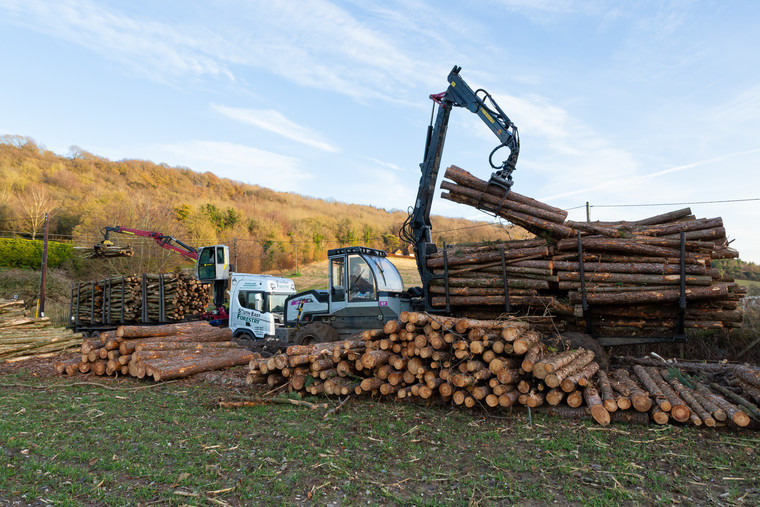Everyone knows you can tell the age of a felled tree by counting the growth rings visible across the exposed trunk – but that’s not all you can tell.
Looking more closely at the spacing between the rings will also reveal when the tree was growing most vigorously, allowing the experienced eye to tell when the woodland around it was thinned.
For Jon Davies, who runs South East Forestry with business partner Dave Holmes, it’s clear proof of the benefit of regularly thinning woodland and allowing the trees left behind to benefit from increased sunlight and less competition.
“You see wide rings early on when the young tree is growing strongly, and then they get narrow as it gets crowded out, but then the rings widen again for a time – that’s when the woodland was thinned and the tree really had an opportunity to grow properly,” he explained.
But while Jon and the long-established South East Forestry team are keen to regenerate areas of woodland for the sake of biodiversity and to encourage better carbon sequestration, they also appreciate that for farmers, woodland is – or can be – a cash crop.
That’s why South East Forestry has a unique approach to woodland management that can deliver a surprisingly good return to landowners.
They have the experience, the skills and the machinery to assess areas of woodland and thin it in a way that will create maximum value for the harvested timber. With their own, sophisticated equipment, a yard where more valuable timber can be stored for later use and an eye for detail, the team can create value for the landowner while also managing an otherwise choked and unhealthy wood.
“We thin the woodland to allow the stronger trees better access to light and to allow new growth below them,” said Dave. “I am always pleased when we go back to a site a few years later and the owner talks about all the butterflies that he or she has seen – although we know that’s not just a coincidence.”
When working in a mixed woodland, Jon will be careful to take oak, cherry or other valuable hardwoods back to South East Forestry’s yard at Hawkhurst, where sawyer Andrew Turner can put it to the most productive use.
“We work hard to make sure that as much of the timber as possible is used for construction, furniture or fencing,” said Jon. “This locks up the carbon contained in the wood, adds value to the timber and helps create and support rural jobs – and because we have our own yard we can store good timber until we find the right outlet for it.”
That focus on adding value and the ability to hang on to potentially saleable timber allows South East Forestry to offer landowners a better price for their standing woodland than other companies who may just need to turn it all into woodchip – something that Jon sees as a last resort.
“Clearly there is some timber which can only be burned, but that’s our least favoured option,” he explained. “Trees, particularly young healthy trees, sequester carbon, but as soon as you burn the timber at the end of its life you release all that carbon back into the atmosphere.
South East Forestry also has a good relationship with the Forestry Commission and will organise all the necessary felling licences.
When a landowner approaches South East Forestry, Jon will walk the land with the owner, using his trained eye to spot potential uses for the trees within it so that he can offer the best price.
“We can generally balance poor areas that just need thinning to restore their vitality, and have very little value, with better areas that contain higher value hardwood or softwood,” he explained. “We then offer the landowner a good price while also helping his woodland to regenerate – it’s a real win-win situation for them.”
Photos: ©Martin Apps, Countrywide Photographic




